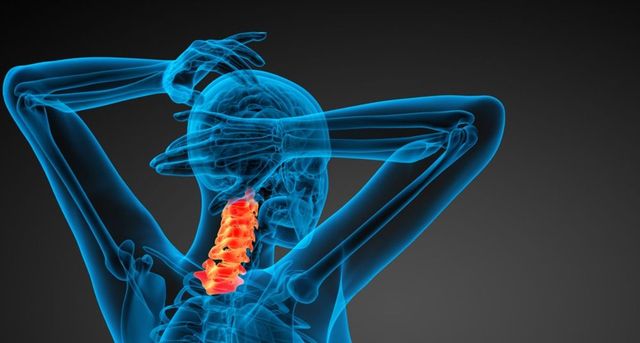Checking Out Spinal Decompression Strategies: What You Required to Know for Better Spine Treatment
Spinal decompression methods are crucial for people experiencing chronic neck and back pain or spinal concerns. These techniques range from non-invasive treatments to surgical choices, each designed to soothe pressure on the back. Recognizing these strategies is necessary for effective back treatment. However, not all approaches appropriate for every single condition. The nuances behind each method warrant better exam, as they can substantially influence recuperation and total health and wellness end results. What factors should one consider prior to making a choice?
Recognizing Spinal Decompression
Spinal decompression may sound facility, it basically refers to a selection of strategies aimed at reducing pressure on the spinal cable and surrounding nerves. The back is a critical structure that sustains the body and protects important neurological pathways. When compression happens, it can bring about discomfort, discomfort, and minimized mobility. Recognizing spinal decompression includes recognizing the sources of this pressure, such as herniated discs, spinal stenosis, or injury. By addressing these underlying issues, decompression strategies seek to recover appropriate positioning and function. This procedure can entail both non-surgical and surgical approaches, tailored to private client requirements. The objective is to enhance the lifestyle by relieving discomfort, improving stance, and assisting in far better motion. As awareness of spinal health expands, the relevance of recognizing spinal decompression ends up being significantly relevant for those looking for efficient therapy alternatives
Usual Spinal Decompression Methods
Spinal decompression methods incorporate an array of approaches developed to eliminate pressure on the spinal column and its involved frameworks. These strategies can be extensively categorized right into non-surgical and medical techniques. Non-surgical techniques include spinal traction, where gentle pulling pressures are put on the spine, producing room between vertebrae. This can minimize nerve compression and promote recovery. Chiropractic care modifications likewise drop under this group, focusing on straightening the spinal column to improve function.
Surgical decompression techniques entail treatments such as laminectomy, where a section of the vertebra is eliminated to ease stress on the spinal cable or nerves. Discectomy, an additional surgical alternative, involves the elimination of herniated disc material. In addition, minimally invasive methods, like endoscopic discectomy, are acquiring popularity as a result of their reduced recovery times. Each technique serves a particular objective and might be selected based upon private client requirements and the extent of their spinal problem.
Benefits of Spinal Decompression
When thinking about the numerous techniques to handling spinal problems, the advantages of spinal decompression methods come to be apparent. These methods aim to soothe pressure on the spinal discs and nerves, which can alleviate pain and boost general spinal health. By creating area in between vertebrae, decompression advertises enhanced blood flow and nutrient flow to the affected areas, facilitating healing and healing.
In addition, spinal decompression can help bring back the natural placement of the spinal column, possibly minimizing the risk of future injuries. Individuals typically report boosted wheelchair and adaptability following therapy, leading to an improved quality of life. The decrease in stress can decrease symptoms linked with problems such as herniated discs, sciatic nerve pain, and spinal stenosis, supplying a non-invasive choice to more intrusive treatments. Overall, try this web-site spinal decompression methods offer a variety of physical and restorative benefits, making them a useful component of substantial back care.

That Can Benefit From Spinal Decompression?
Individuals experiencing chronic neck and back pain, herniated discs, or spinal constriction may locate considerable alleviation via spinal decompression methods. This non-invasive therapy can be specifically advantageous for those experiencing nerve compression symptoms, such as prickling, numbness, or weak point in the arm or legs. Athletes recovering from injuries or individuals with degenerative disc illness may additionally think about spinal decompression as a sensible alternative for pain monitoring and boosted mobility.
Candidates for spinal decompression frequently include those who have not responded well to traditional therapies, such as drugs or physical treatment. It can also serve as an option for clients seeking to prevent medical treatment. On the whole, spinal decompression techniques can supply a healing alternative for various individuals encountering spinal issues, aiding them reclaim a better of life and practical capability. Consulting a medical care expert is necessary to figure out the suitability of this treatment for particular conditions.
Factors to consider and Preventative Measures for Spinal Decompression

The kind of spinal here decompression method-- whether surgical or non-surgical-- must align with the person's particular condition and total health standing. Monitoring during the treatment is essential to address any kind of adverse reactions quickly. Individuals should likewise comprehend that spinal decompression is not a one-size-fits-all option; a considerable therapy plan might include physical therapy or lifestyle changes to sustain healing. Generally, adhering to these preventative measures can greatly improve the efficiency of spinal decompression therapies and advertise excellent back health.

Often Asked Inquiries
The length of time Does a Common Spinal Decompression Session Last?
A common spinal decompression session lasts between 30 to 45 minutes. This visit this web-site period permits suitable therapy while making certain the patient remains comfortable and gets adequate attention to their specific spinal concerns and needs.
Can Spinal Decompression Be Done in the house?
Spinal decompression can be done at home through specific exercises and devices, such as inversion tables or lumbar dental braces. Nevertheless, examination with a medical care specialist is suggested to guarantee safety and performance in specific instances.
Is Spinal Decompression Painful?
Spinal decompression is typically not excruciating; however, people may experience light pain or pressure during the procedure. Pain degrees can vary based on the individual's problem and the method used for decompression.
The Number Of Procedure Are Normally Needed for Alleviation?
Commonly, people might need 6 to 10 sessions of spinal decompression therapy to experience significant alleviation (Family Chiropractic). The precise number can differ based on specific conditions and reactions to therapy, necessitating tailored analysis by health care experts.
Are There Any Type Of Age Constraints for Spinal Decompression?
There are typically no rigorous age limitations for spinal decompression treatment. Nevertheless, viability may depend upon private wellness conditions and the certain method used, so consultation with a health care specialist is recommended for tailored suggestions.
Spinal decompression techniques are crucial for individuals experiencing chronic back pain or spinal concerns. Spinal decompression may appear complex, it essentially refers to a selection of strategies aimed at reducing stress on the spinal cable and surrounding nerves. When considering the various approaches to handling spinal concerns, the benefits of spinal decompression strategies come to be apparent. Individuals enduring from chronic back pain, herniated discs, or spinal stenosis might locate significant relief via spinal decompression strategies. Overall, spinal decompression methods can give a restorative option for numerous individuals facing spinal problems, helping them restore a higher high quality of life and practical capability.